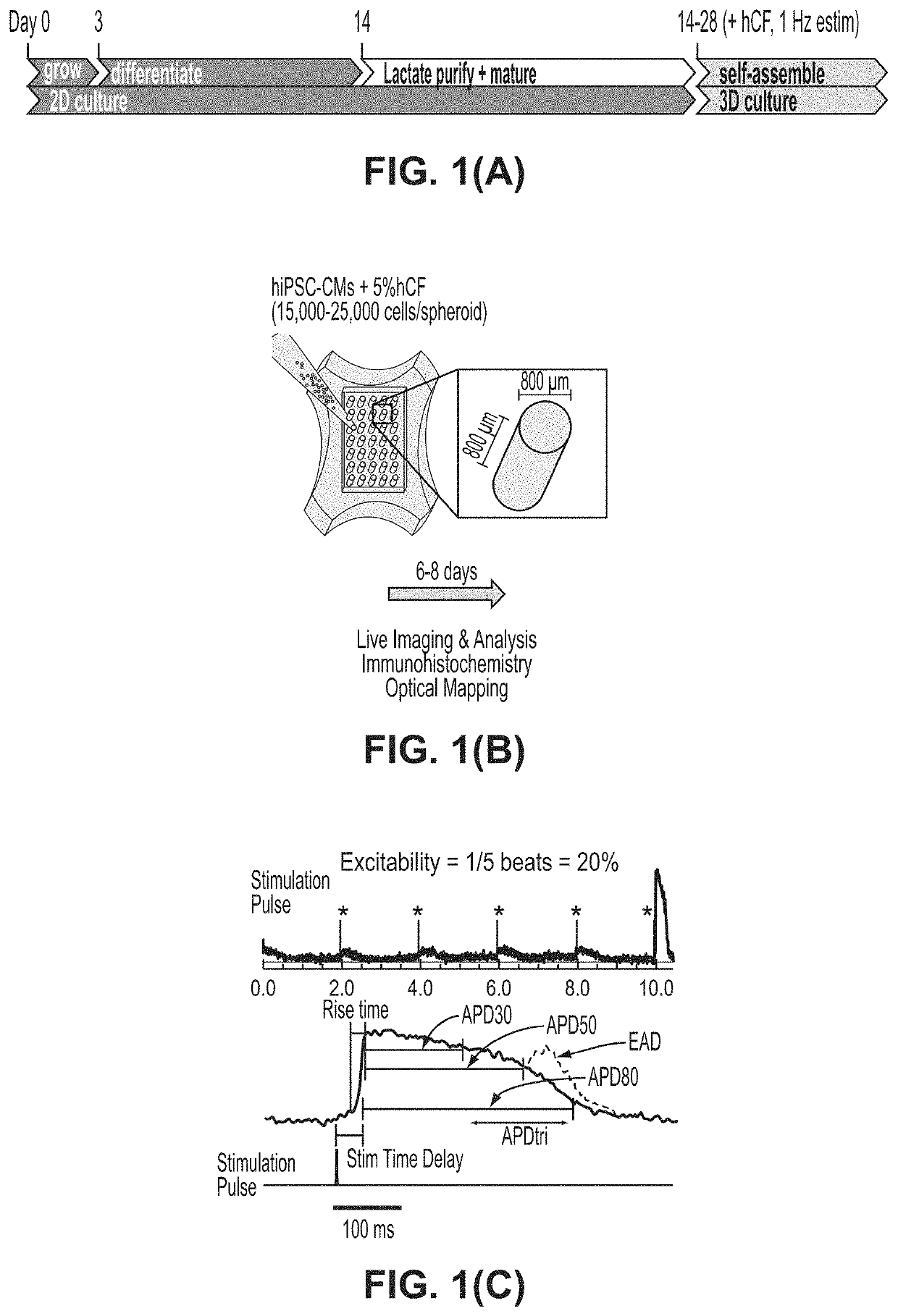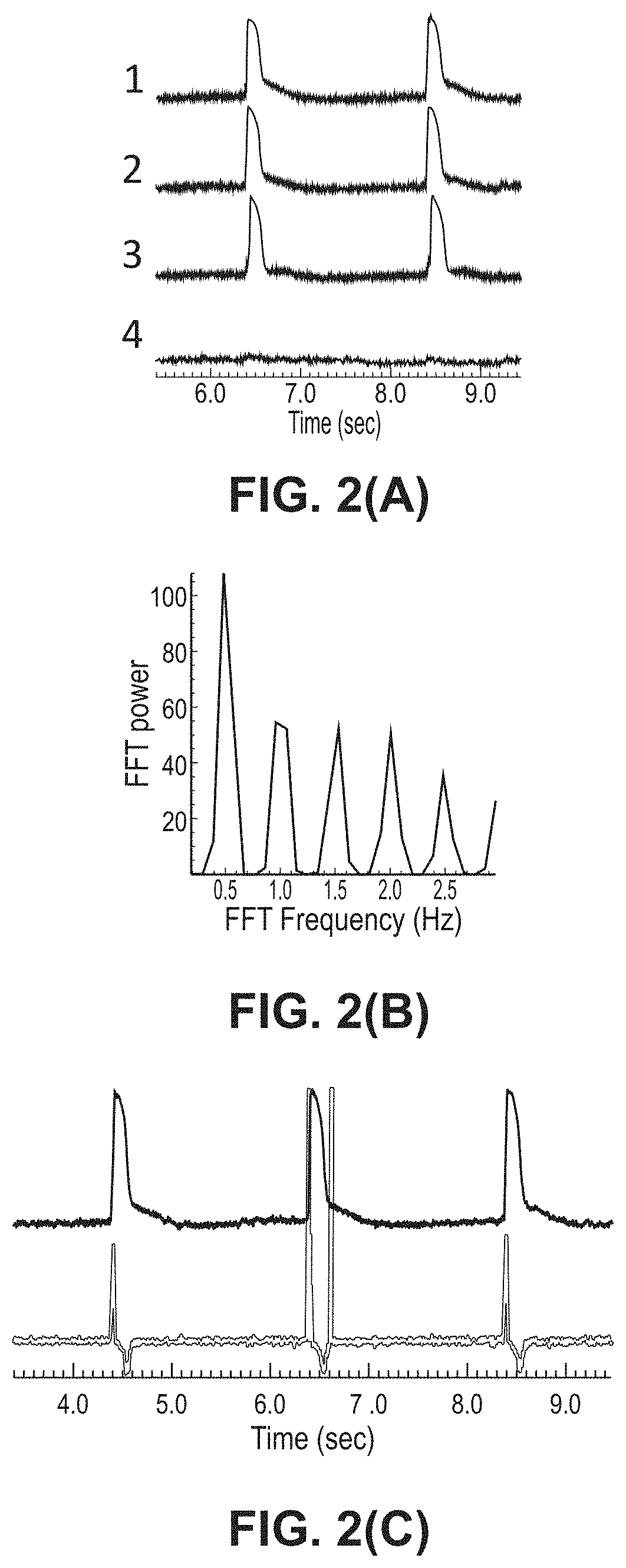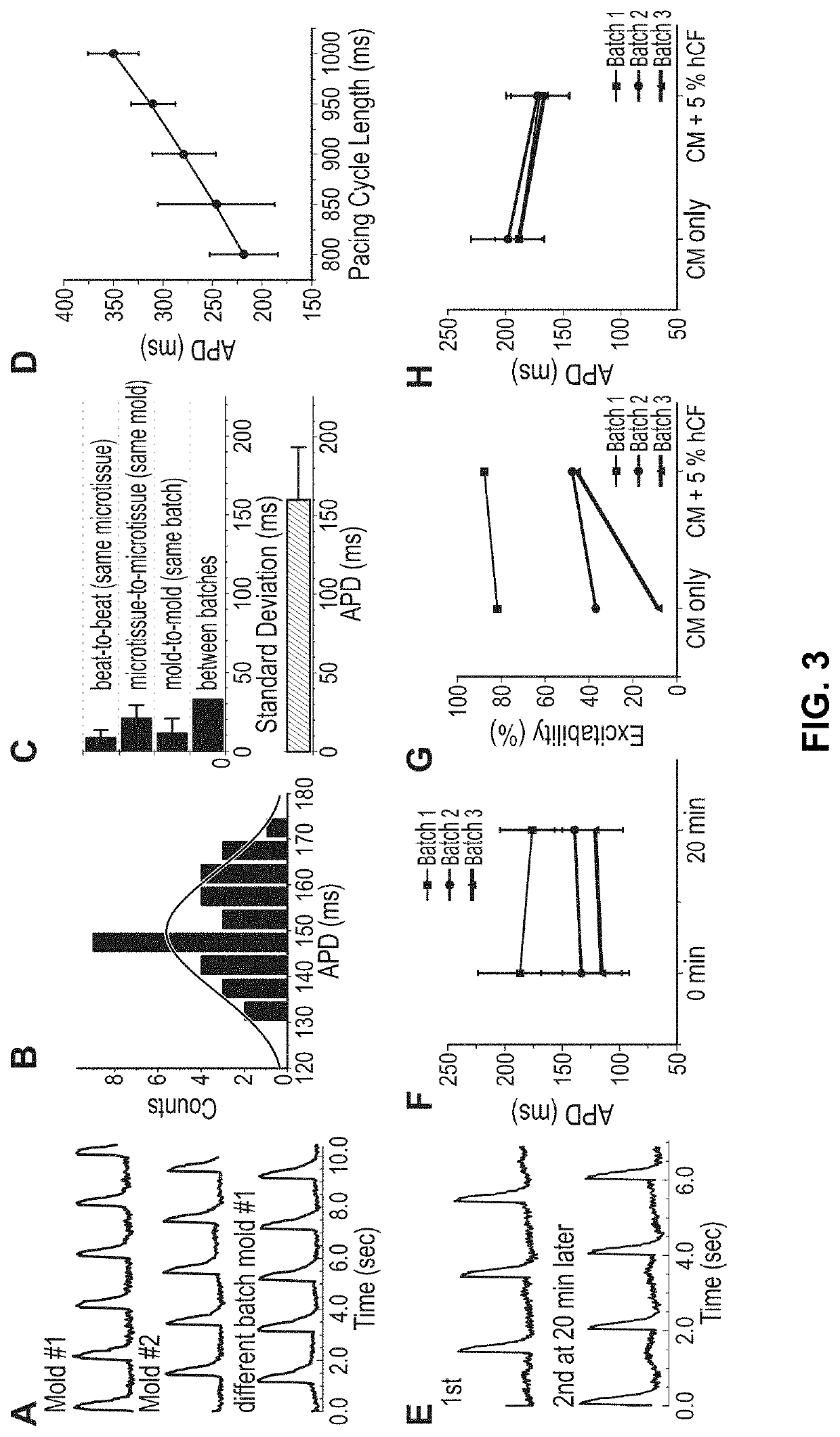A human in vitro cardiotoxicity model
a human in vitro and cardiotoxicity technology, applied in the field of image enhancement, fluorescence/phosphorescence, instruments, etc., can solve the problems of increasing the cost of developing new drugs, life-threatening, and severe cardiotoxicity of environmental and industrial chemicals and pharmaceutical drugs
- Summary
- Abstract
- Description
- Claims
- Application Information
AI Technical Summary
Benefits of technology
Problems solved by technology
Method used
Image
Examples
example 1
Development of an In Vitro Screening Platform for Pro-Arrhythmic Toxicity Testing Using Human 3D Cardiac Microtissues
[0250]In this EXAMPLE, the inventors address a critical need in screening compounds for arrhythmogenic cardiotoxicity with a three-dimensional human cardiac microtissue model using purified human induced pluripotent stem cell-derived cardiomyocytes and human cardiac fibroblasts. Robust quantification of eight unique parameters derived from optical mapping of the action potential (membrane voltage) enables qualification of the model via confirmed physiological responses and differentiation of high-risk and low-risk compounds. The inventors demonstrate that hERG channel blockade, required by FDA-approved standards for in vitro cardiotoxicity testing, was not enough to elicit arrhythmias with ranolazine, which is an efficacious clinical anti-arrhythmic drug despite known hERG channel blocker. The inventors show that an estrogen-mimicking compound, the environmental toxic...
example 2
[0271]The Composition of Large, Macro-Scale Engineered Tissues Containing hiPSC-CMs with Human Cardiac Fibroblasts.
[0272]Data produced by the inventors show that 5% human cardiac fibroblasts enhance tissue formation but higher percentages (10%, 15%) distort the action potential signal and elicit spontaneous excitations that could confound an arrhythmia assessment. See Rupert et al. (2020b).
example 3
[0273]Human Cardiac Fibroblasts Uniquely Modulate Electromechanical Function of hiPSC-CMs in Engineered Myocardium
[0274]This EXAMPLE describes the effects of co-culturing adult human cardiac fibroblasts (hCFs) in three-dimensional engineered tissues to recapitulate healthy and diseased myocardium in vitro. See Rupert et al. (2020b). Inclusion of 5% human cardiac fibroblasts into tissues improves tissue formation and contractile function. Human cardiac fibroblasts undergo increased myofibroblast activation in traditional two-dimensional culture, and after prolonged culture, retain this altered phenotype when incorporated into engineered cardiac tissues. Increasing the percentage of human cardiac fibroblasts to 15% of the CM population results in an increasingly arrhythmogenic phenotype of engineered tissues. Taken together, results of this EXAMPLE demonstrate that human cardiac fibroblasts are a valuable cell source to manipulate engineered cardiac tissue physiological and pathophysi...
PUM
 Login to View More
Login to View More Abstract
Description
Claims
Application Information
 Login to View More
Login to View More - R&D
- Intellectual Property
- Life Sciences
- Materials
- Tech Scout
- Unparalleled Data Quality
- Higher Quality Content
- 60% Fewer Hallucinations
Browse by: Latest US Patents, China's latest patents, Technical Efficacy Thesaurus, Application Domain, Technology Topic, Popular Technical Reports.
© 2025 PatSnap. All rights reserved.Legal|Privacy policy|Modern Slavery Act Transparency Statement|Sitemap|About US| Contact US: help@patsnap.com



